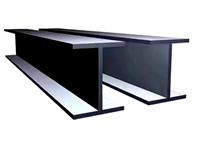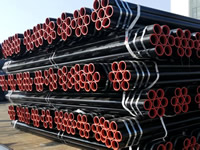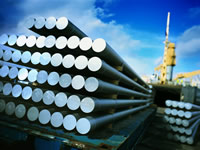China steel exports are facing most grim situations

China’s steel sector can expect to face increasing international trade friction as inventories and output continue to rise amid weakening demand driven by the economic slowdown, according to Wang Liqun, vice-chairman of China Iron and Steel Association.
Wang told an industrial conference that overcapacity will remain in the second half of the year, and companies should not expect exports to rise to counter the situation.
Earlier this week, the ASEAN Iron and Steel Council urged the Chinese government to remove export tax rebates for steel leaving the country for ASEAN-member nations, saying that Chinese-made products are some 3-5 percent cheaper than in some regional markets.
Xu Liying, a senior researcher at Beijing-based Lange Steel Information Research Center, said steel companies should prioritize expanding into other overseas markets to reduce pressures on the country’s domestic supply glut.
Xu confirmed that Chinese steel makers are offering better prices in many global markets and that exports to Asian countries are “increasing fast”.
Chinese steel exports to the rest of Asia grew 32 percent year-on-year to 36.55 million metric tons during the first half, accounting for around 70 percent of the country’s total exports, according to data from industrial information provider Mysteel.com.
Exports to Southeast Asia increased significantly, said Mysteel.
“Raising anti-dumping and anti-subsidy probes is a common method for some national industries to fight against foreign competitors,” Xu said.
According to data from the Ministry of Commerce, there were 53 trade investigations launched against China from 18 countries and regions during the first half this year, a 20.4 percent rise compared with the same period last year.
It also predicted the United States and Europe will launch several trade probes against the country in the second half.
This month the US announced anti-subsidy and anti-dumping probes against Chinese, Brazilian and Indian cold-rolled steel plate products sold in the country.
The US International Trade Commission will make a preliminary ruling by Sept 11 on its investigation, with its Department of Commerce expected to rule on any potential anti-subsidy penalties on Oct 21, and anti-dumping measures on Jan 1.
Xu said the US probes will affect Chinese producers including Anshan Iron and Steel Co and Benxi Iron and Steel Co, which are both major producers of such steel.
In 2014, China exported 898,900 tons of cold-rolled plates to the US, more than double the amount in the previous year, according to data from Lange.
Cold-rolled steel is widely used for metal furniture, computer cabinets and hardware, home appliances and a variety of construction-related products.
“But anti-dumping taxes imposed on Chinese steel products have not actually cut exports to any significant scale,” Xu said.
“As Chinese steel companies participate more in the world market, they also gradually learn how to protect their interests.”
China itself has started anti-dumping probes on grain-oriented, flat-rolled electrical steel imports from Japan, South Korea and Europe last month.
XINSTEEL INFORMATION

 +86 371 55057610
+86 371 55057610  inquiry@xsteelplate.com
inquiry@xsteelplate.com








 Tel:+86 371 55057610
Tel:+86 371 55057610  Fax: +86 371 5505 7611
Fax: +86 371 5505 7611